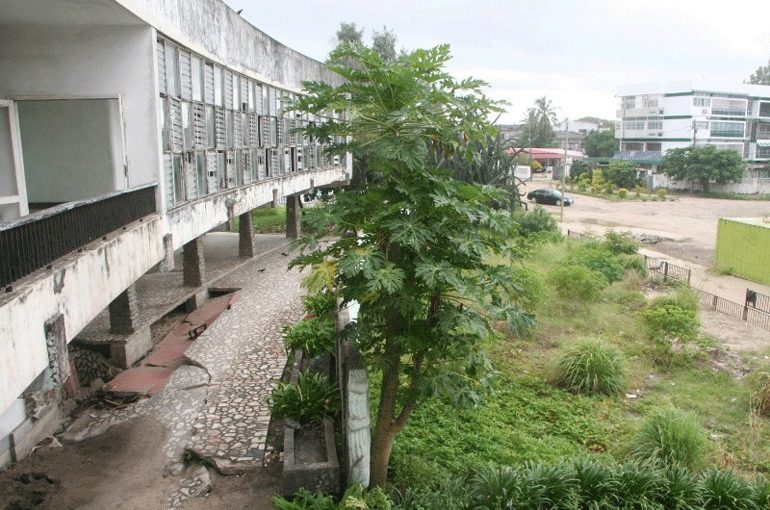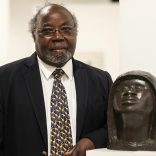Mozambican film premieres in theatres across Portugal
Beira’s historical ‘Palace of Weddings’ to be rehabilitated this year – Mozambique

Notícias
Following the award of the construction contract, the rehabilitation of the city of Beira’s iconic Palace of Weddings should start later this year.
The provincial director of Justice, Constitutional and Religious Affairs, José Jocene, who gave the information to our reporter in Beira yesterday, said that this happened after a public tender process in which none of the three competitors was approved.
The decision was arrived at by a jury composed of two engineers from the Public Works, Housing and Water Resources sector and a technician from the Directorate of Justice, Constitutional and Religious Affairs in Sofala.
Jocene said that the timespan of the works under consideration would depend on the consulting process, emphasising that his desire was to see the works concluded within the mandate of this government but refusing to give a fixed period for the project’s completion.
He did however indicate that the restoration of the now-derelict property was of great interest to both the provincial and central administrative authorities, and that it would be finished as soon as possible.
Jocene said that the General Deposit of the Registry and Notary had already paid over six million meticais for consulting and rehabilitation of the building, and promised that that body would be ready to disburse other funds for the total execution of the work.
Completion of the venture would create ideal conditions for the celebration of weddings, he said. Presently, alternative rooms in the Manga , Munhava and Baixa Conservatories and the Provincial Direction of Justice building are available.
The Palace of Weddings was abandoned for many years and was provisionally inhabited by 17 Sofala Prison Service staff members, the justice director in Sofala justifying their occupation with the lack of any other suitable accommodation for them.
It was already serving as a hideout for dubious individuals and fishermen, and the presence of Prison Service guards was thought to have prevented even worse, but, due to its advanced state of deterioration, the building was on the verge of collapse and considered a mortal threat to its residents.
ALSO READ: Sad deterioration of one of Beira’s most emblematic buildings
Earlier this month, our newspaper published an article according to which the Mozambican state was considering whether or not the Palace of Weddings would be rehabilitated. This latest news would seem to indicate that it has not discarded that option.
By Horacio João, Jornal Notícias
Palácio dos Casamentos (former Automóvel Touring Clube de Moçambique (ATCM))
Located at the end of Ponta Gea in Beira next to the Grande Hotel da Beira designed by the architect José Luís Porto (1883-1965) in 1946, the Palace of Weddings is located next to the sea in Largo Artur Brandão, and is graced by a mural by Shikhani.
It is characterized as a primarily horizontal volume of two stories laid out in a curve, intersected by a vertical volume that contains the accesses. This vertical volume has an asymmetrical location in the design of the facade, and is defined by a concrete flap and a plane coated with glass mosaic tiles with geometric designs.
The ground floor is a volume set back from the upper and is limited only to the south, where the administrative and service spaces are situated, liberating a generous area to the north for a covered terrace overlooking the inner garden and the sea. On the upper floor are located social spaces such as the library, the games rooms, a restaurant and a ballroom hinged to vertical access through a covered outside space.
Conceived as a circulation gallery and living area, this space defines the east-facing main façade, opening out over the Largo Artur Brandão through a horizontal opening throughout the length of the facade, and practically full height. The West façade is also marked by a set of horizontal openings between pillars, but of lesser height and located on the wall near the ceiling.
Fachada principal Nascente. Foto:© Arquivo EWV, Ana Tostões, 2010.
The work by Paulo Melo Sampaio shows references to Le Corbusier and elements of the Brazilian plasticity in the elegant modulation of the suspended body that floats on the pillars of the first floor.
By Ana Tostões, Daniela Arnau in hpip.org, Heritage of Portuguese Influence/ 2008












Leave a Reply
Be the First to Comment!
You must be logged in to post a comment.
You must be logged in to post a comment.